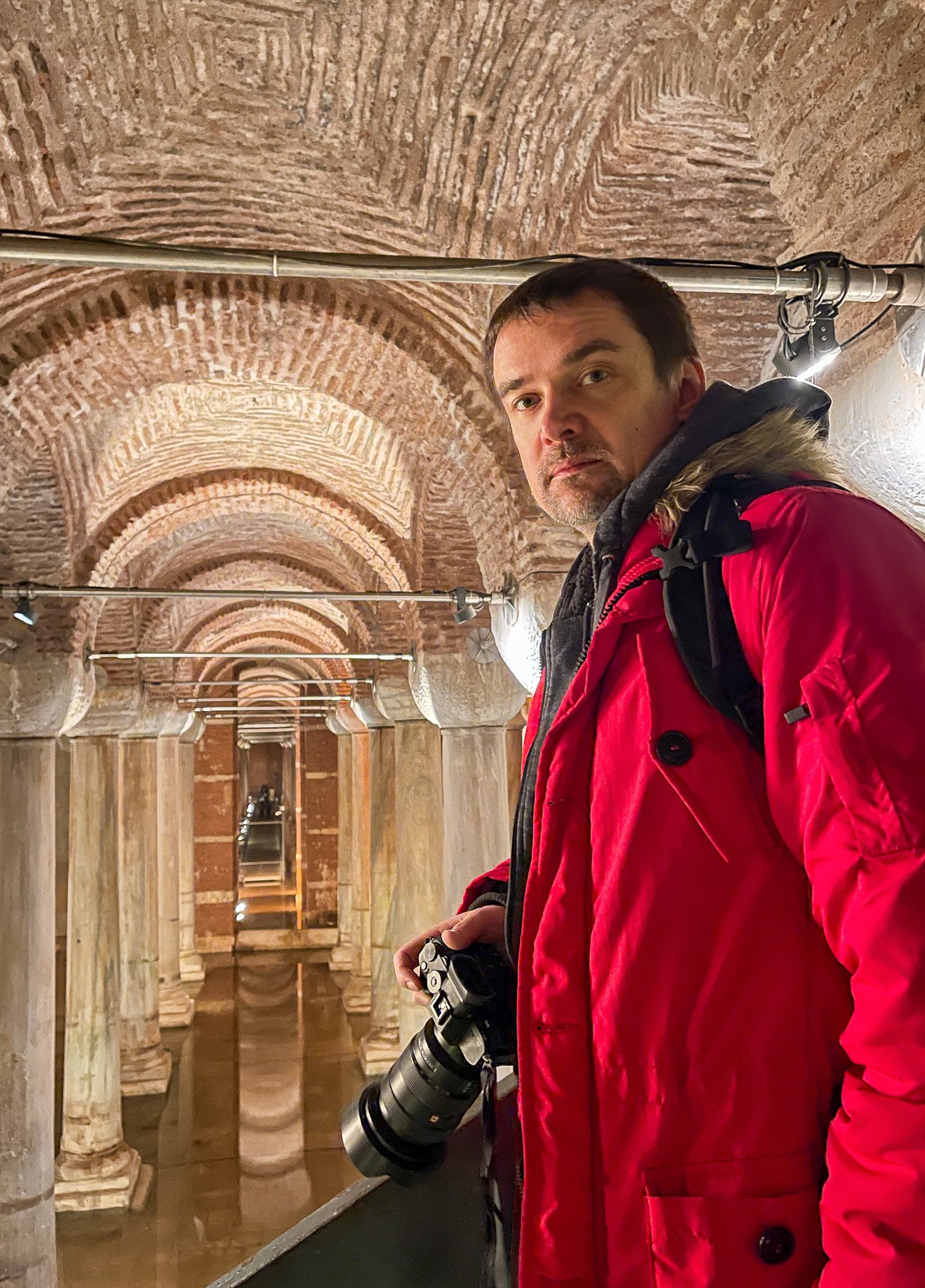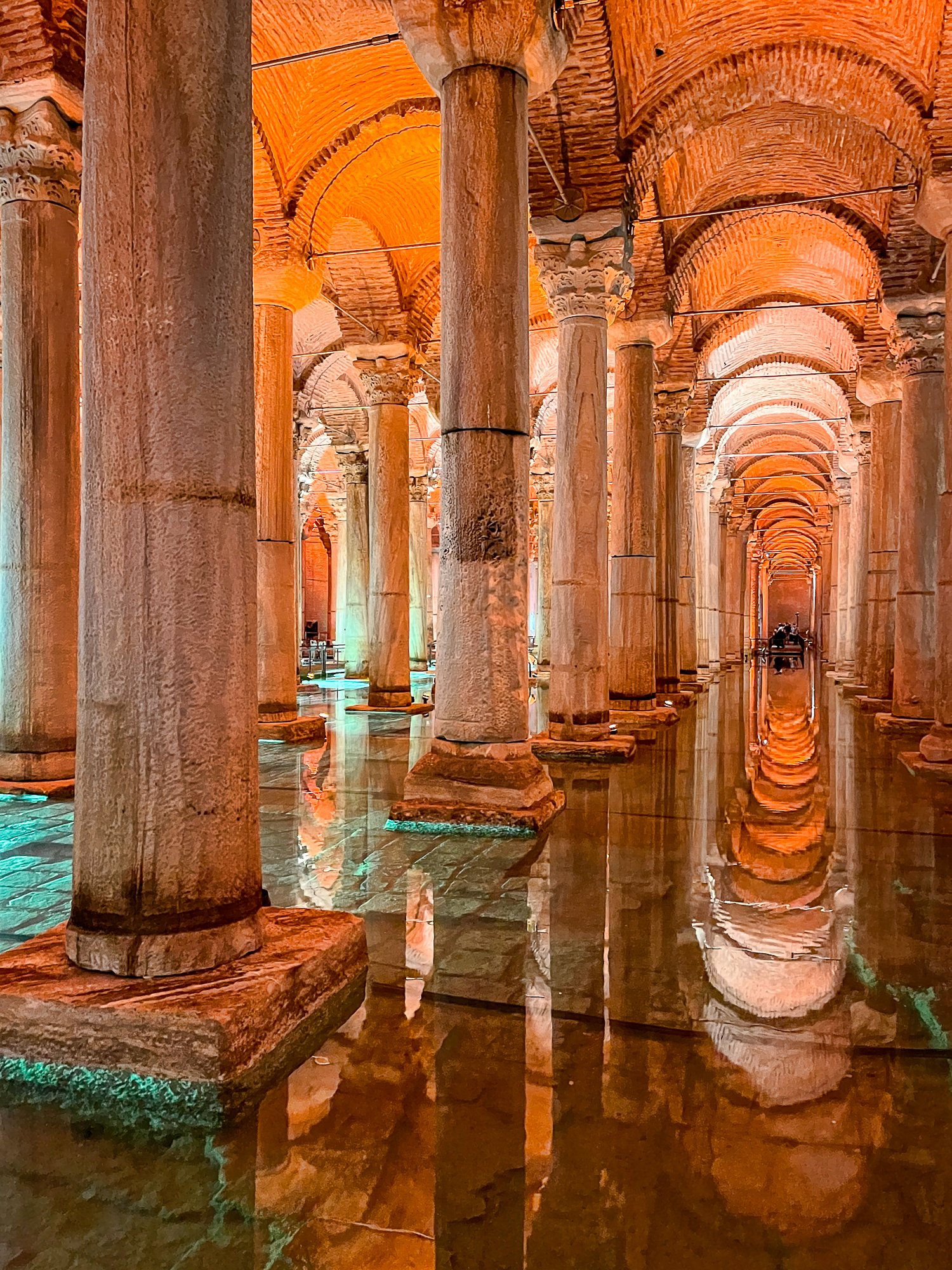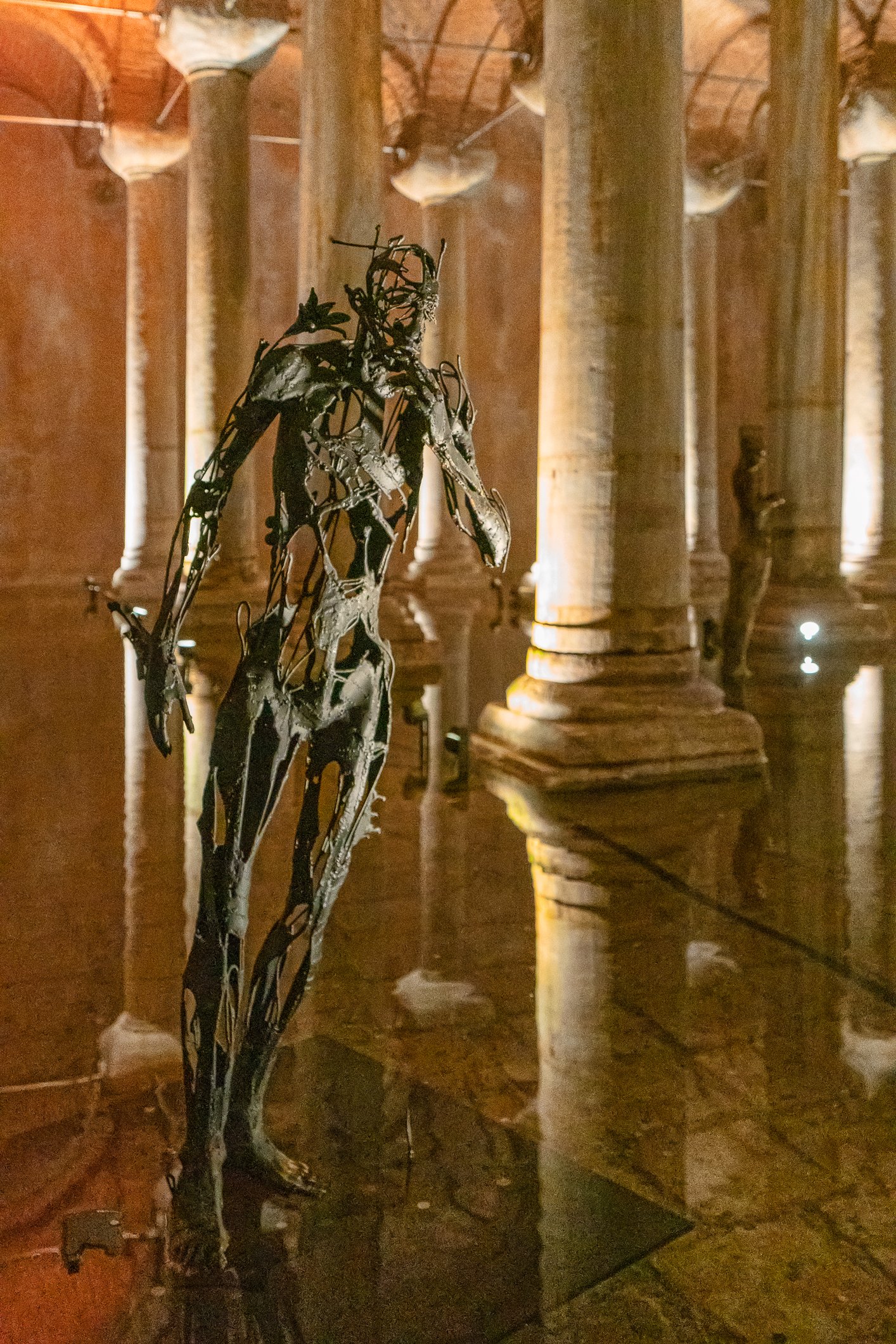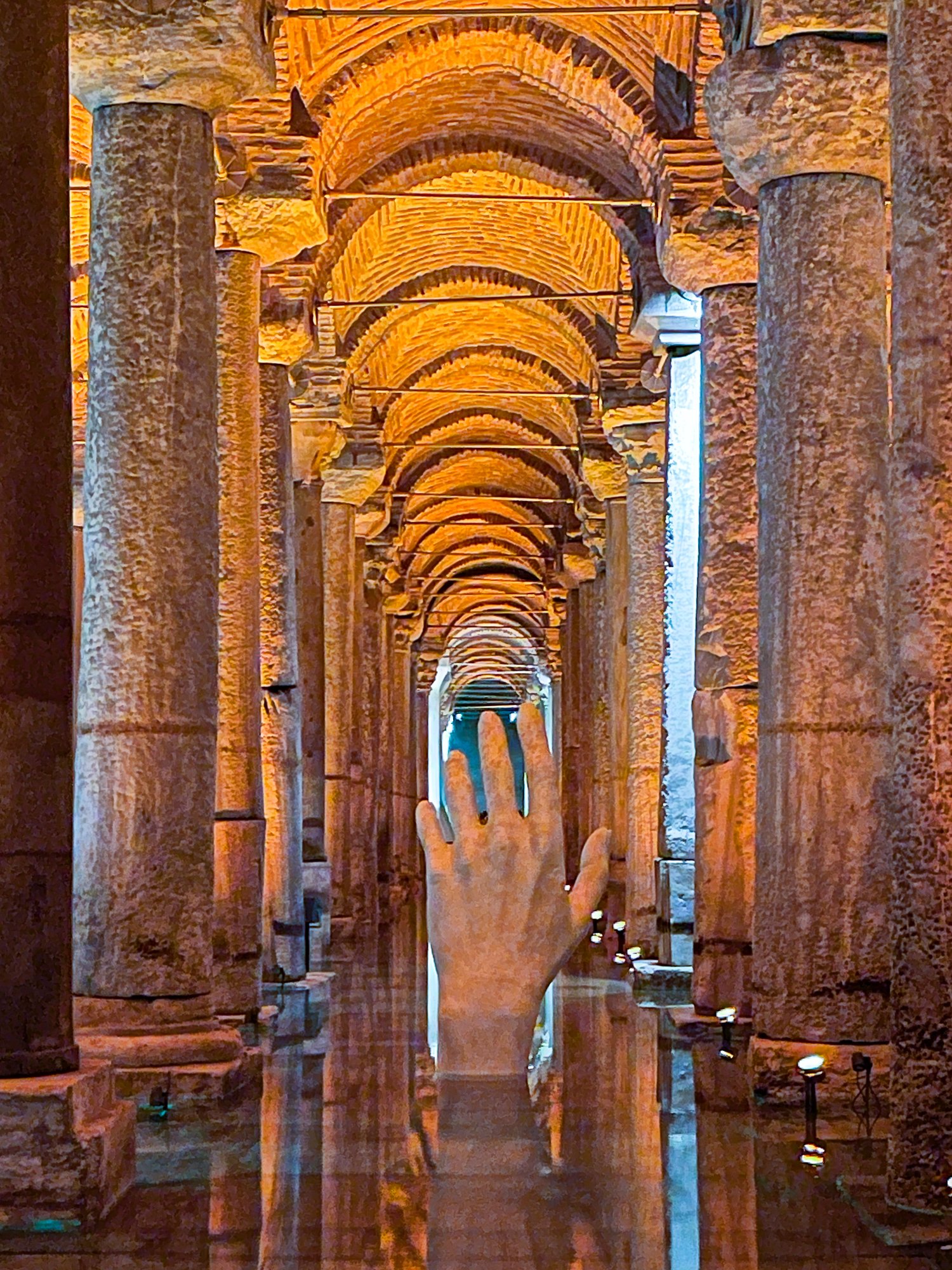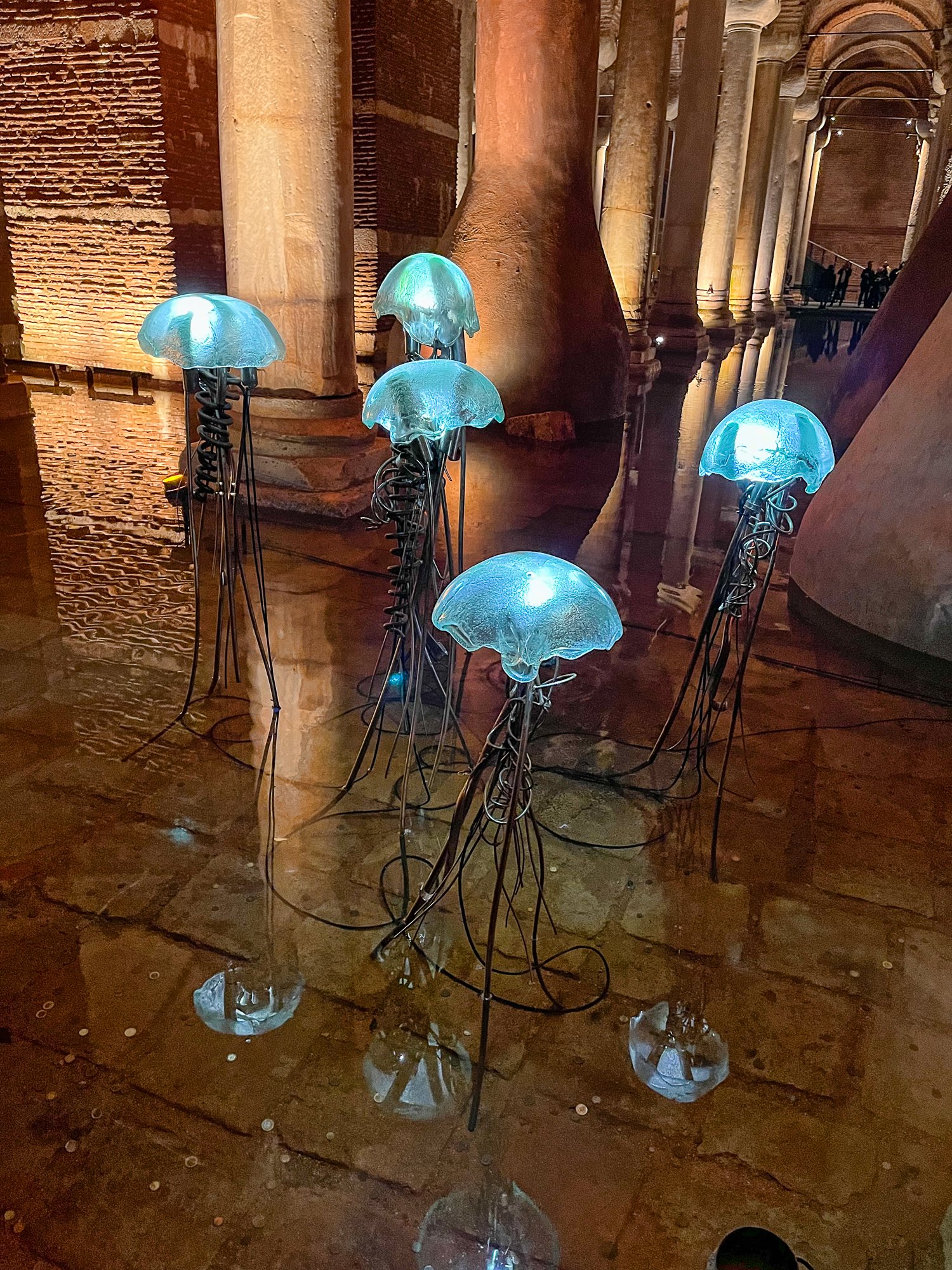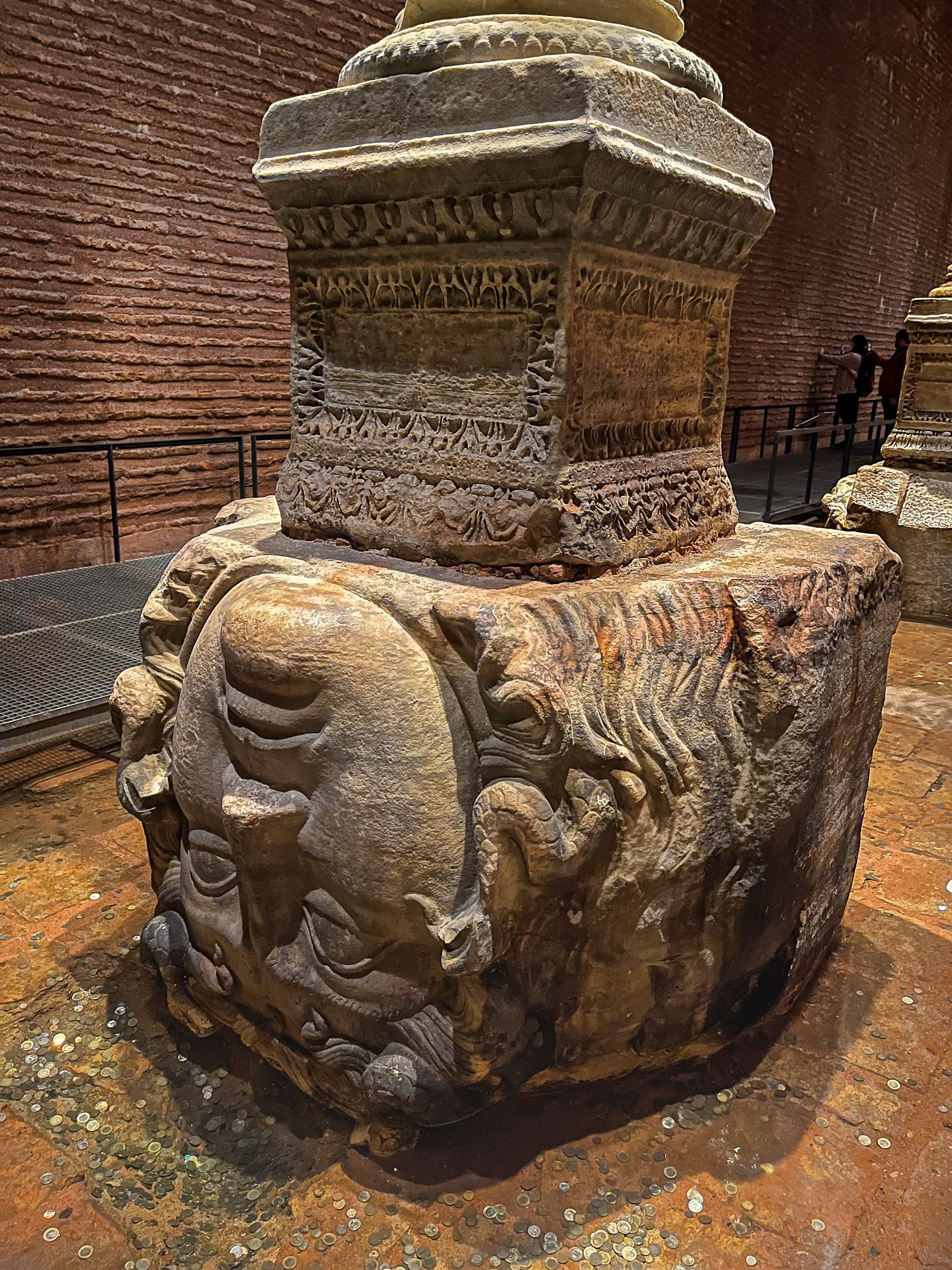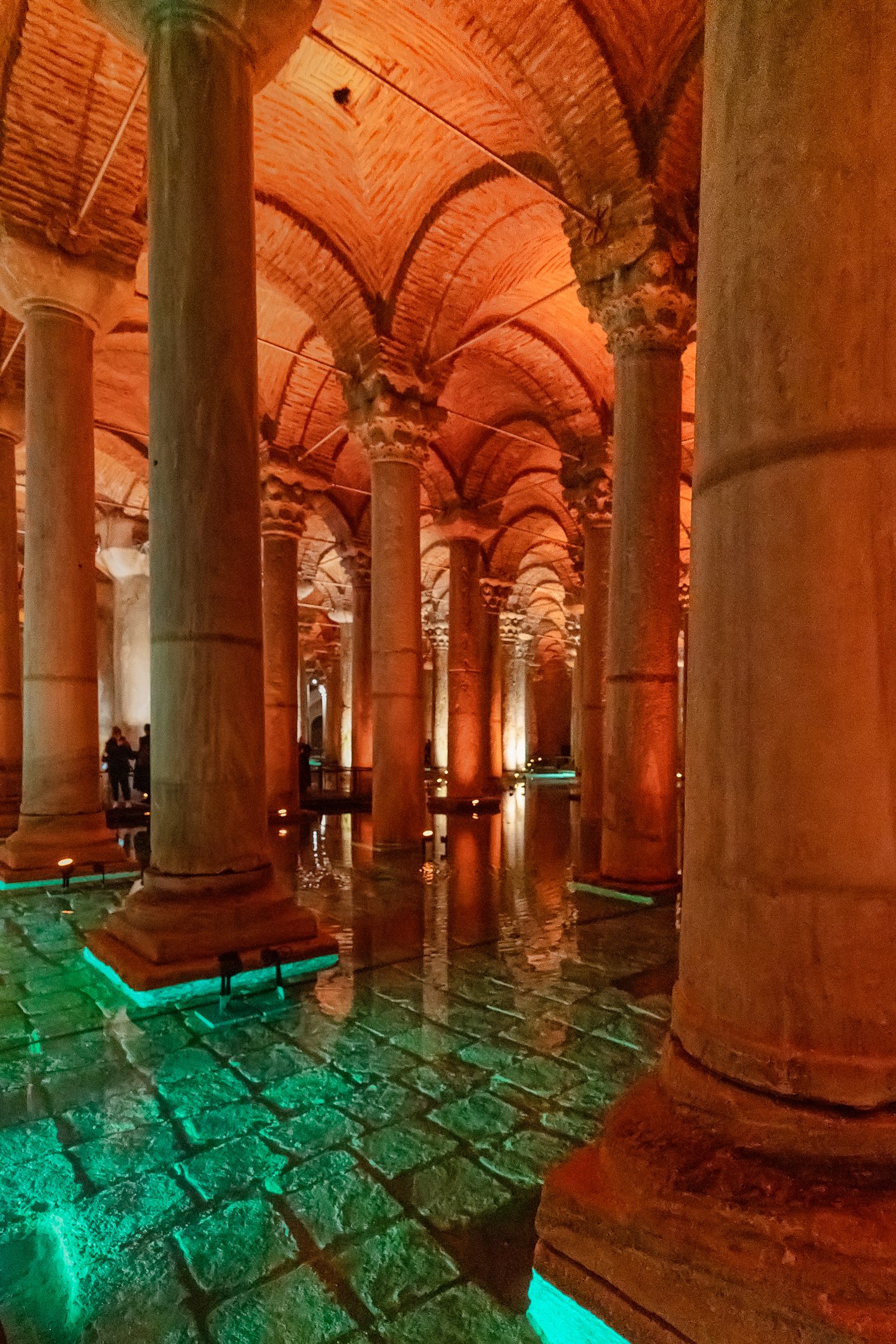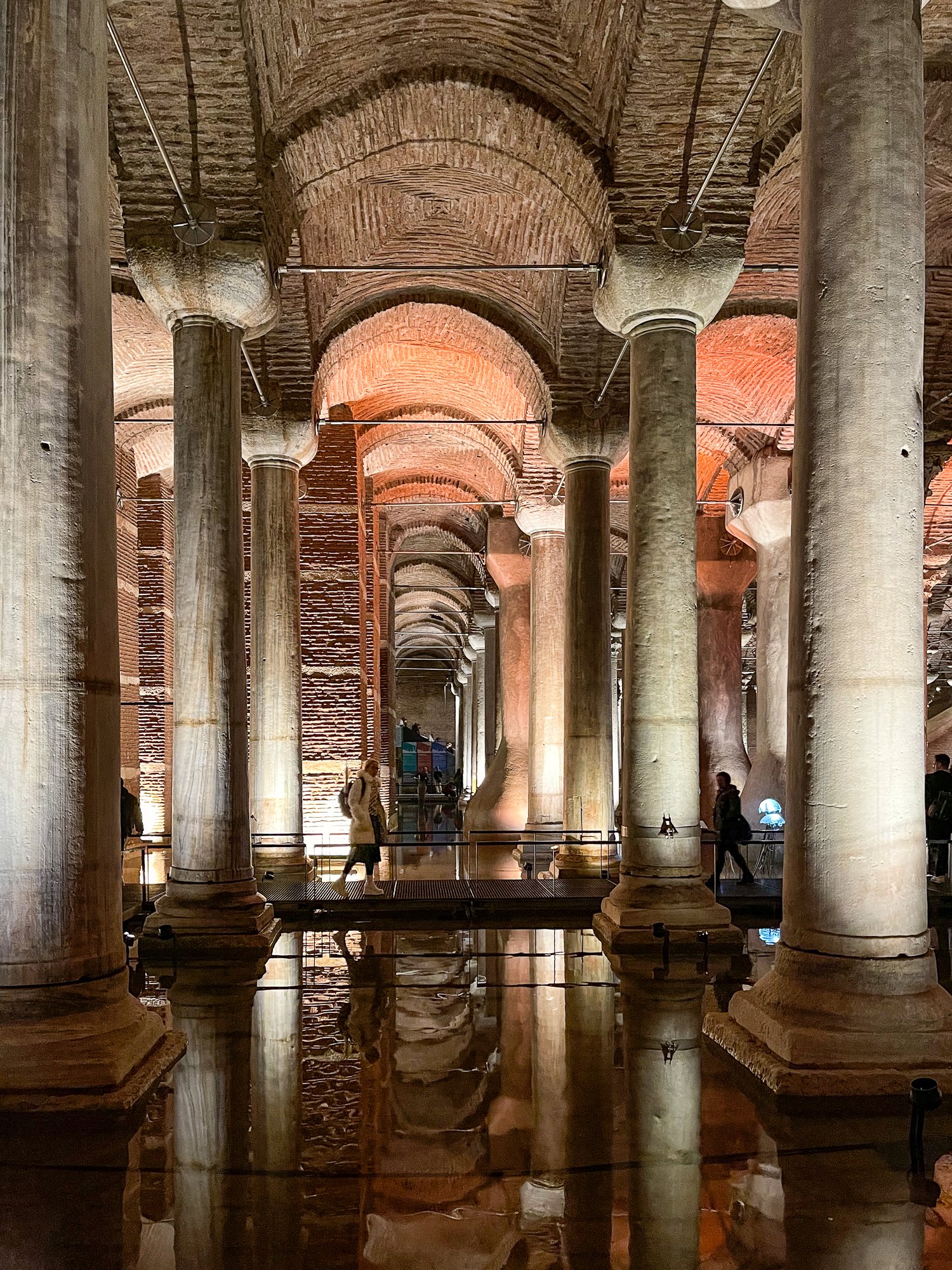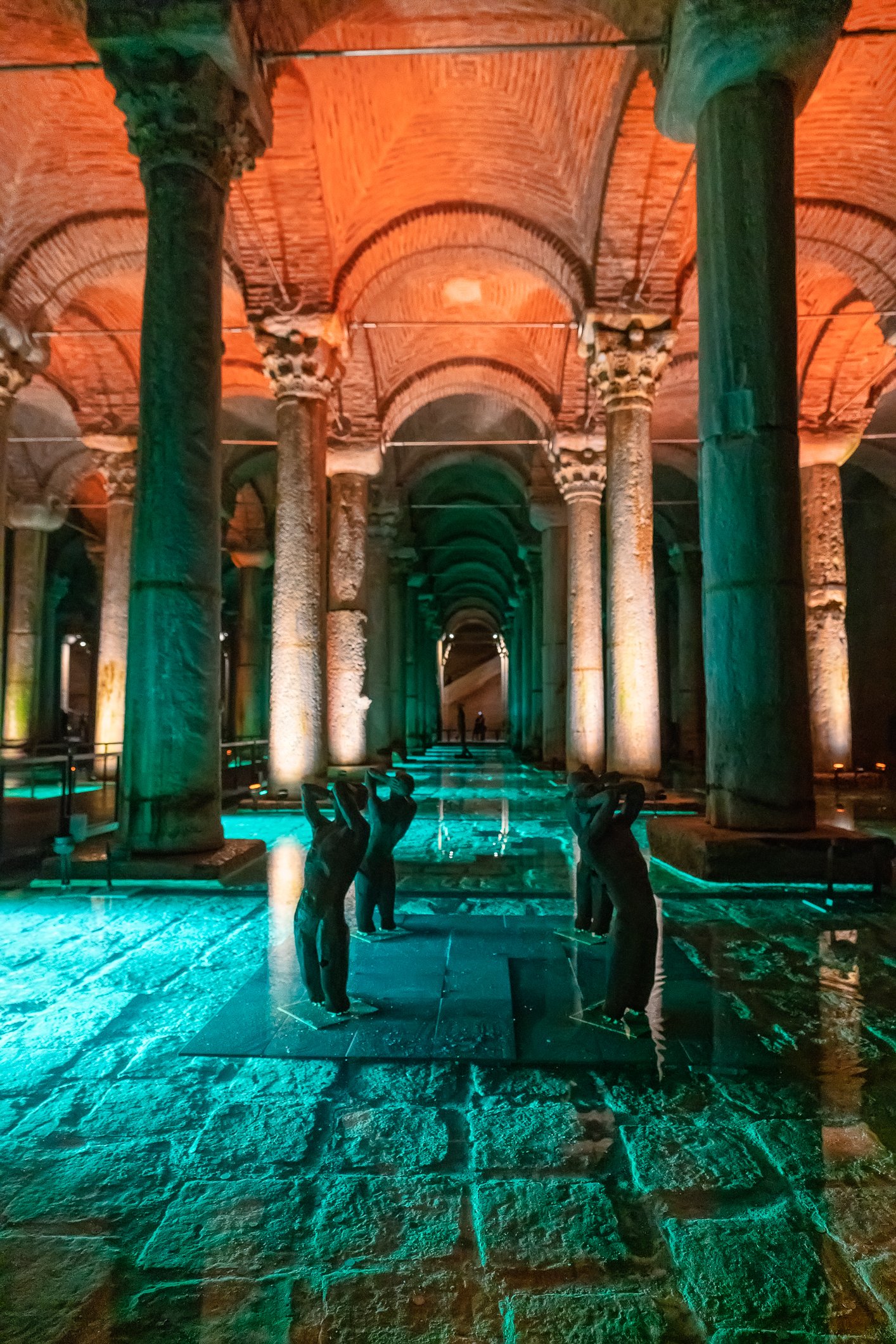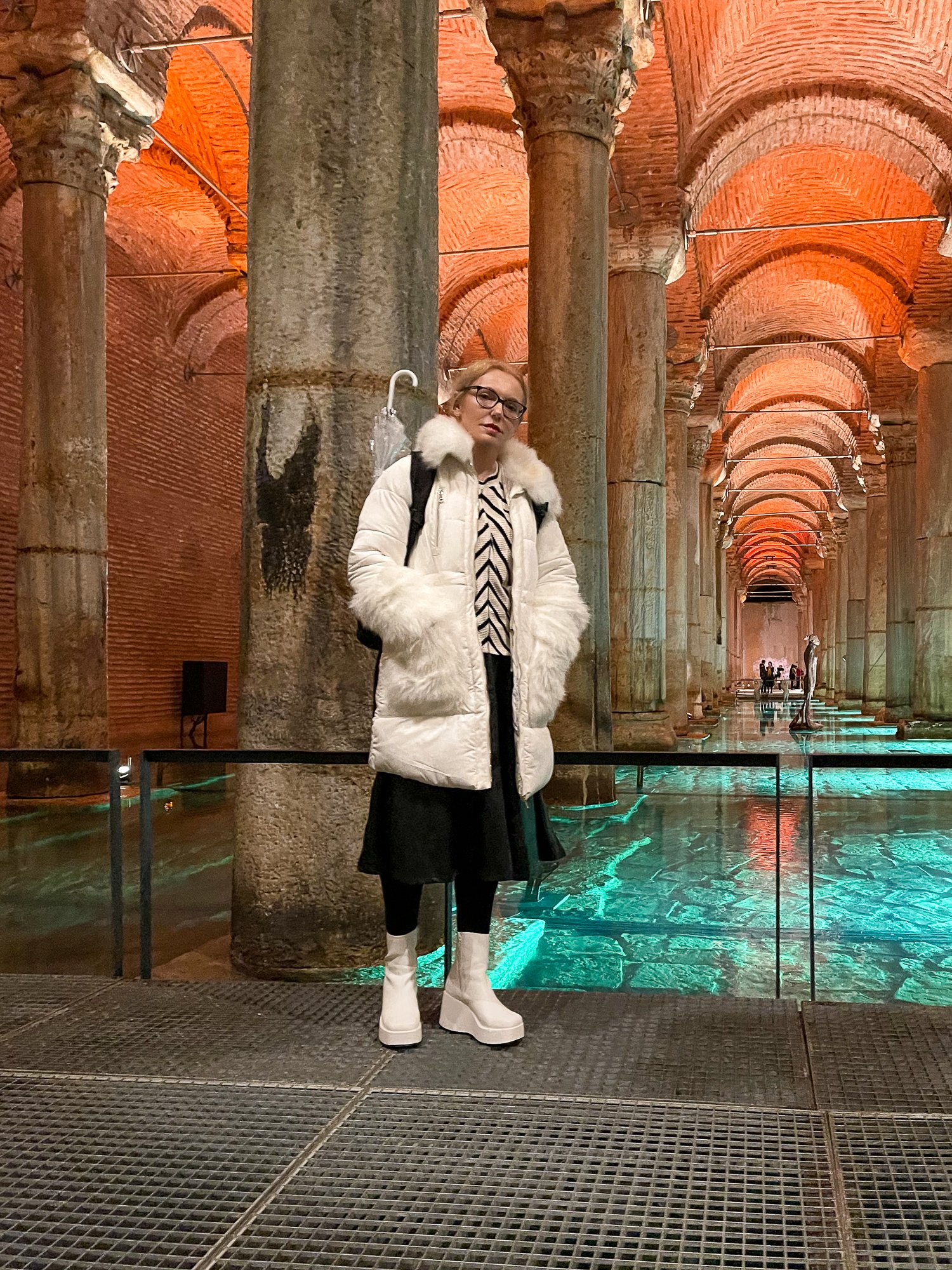The first place we aim to visit today is The Basilica Cistern. This is an ancient underground chamber, built in the 6th century by Emperor Justinian, that once provided water to the Great Palace of Constantinople and other buildings in the city. We find the entrance on the other side of the street from the Hagia Sophia; surprisingly, there are not that many visitors yet. We grab our tickets and go down the stairs to marvel at the 336 marble columns arranged in 12 rows of 28, which support the cistern.
Pierwszym miejscem, które chcemy dziś odwiedzić jest Cysterna Bazyliki. Jest to starożytna podziemna komora, zbudowana w VI wieku przez cesarza Justyniana, która niegdyś dostarczała wodę do Wielkiego Pałacu Konstantynopola i innych budynków w mieście. Znajdujemy wejście po drugiej stronie ulicy od Hagia Sophia i o dziwo nie ma jeszcze zbyt wielu zwiedzających. Kupujemy nasze bilety i schodzimy po schodach, aby podziwiać 336 marmurowych kolumn, ułożonych w 12 rzędach po 28, które podtrzymują cysternę.
The columns are adorned with intricate carvings and add to the beauty and grandeur of the cistern. Many of them were salvaged from various ruined temples. Two of them have up-side down medusa heads at their base.
The cistern is filled with water and is supposedly home to a small fish population. A few pieces of contemporary art are scattered around the place, and different sets of lights change regularly, changing the whole atmosphere of the place. We walk around on the raised wooden platform, taking pictures and soaking in the atmosphere. Two hours later, we emerge on the surface again, ready for a cup of tea.
Niektóre kolumny są bogato zdobione. Wiele z nich zostało tu sprowadzonych z różnych zrujnowanych świątyń. Dwie z nich mają u podstawy odwrócone do góry nogami głowy meduz.
Cysterna jest wypełniona wodą, w której mieszka nieduża populacja ryb. Kilka dzieł sztuki współczesnej jest rozrzuconych po całym pomieszczeniu, a różne zestawy świateł zmieniają się regularnie, zmieniając całą atmosferę tego miejsca. Spacerujemy po podwyższonej drewnianej platformie, robiąc zdjęcia i chłonąc atmosferę. Dwie godziny później wynurzamy się na powierzchnię, gotowi na filiżankę herbaty.


